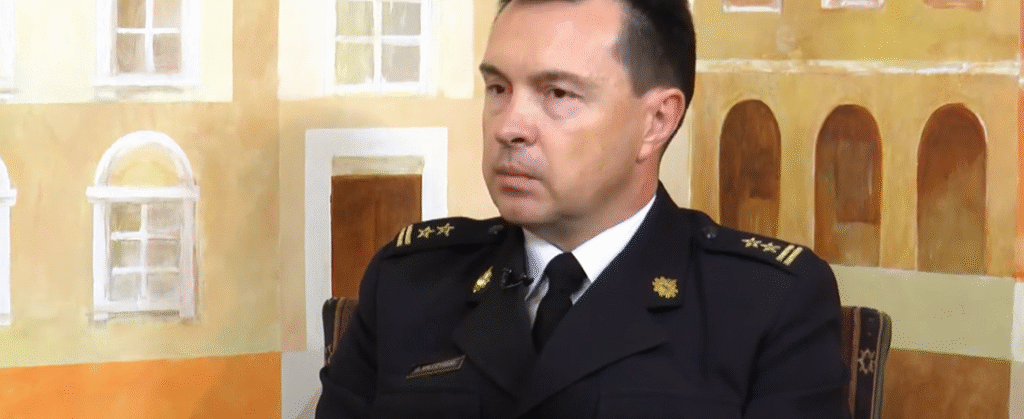The impact of Grzegorz Wilczyński was consistent, lasting, and resonant throughout Polish sports, much like the steady beat of a long-distance runner’s stride. Even though his death on July 24, 2025, signaled the end of a remarkable career, his training methods and principles are still ingrained in the routines of top athletes. Wilczyński was especially creative in his approach to physical preparation, combining conventional endurance techniques with remarkably contemporary conditioning methods that set him apart in the competitive coaching field.
Growing up in the small town of Oleśnica, he started out as a competitor rather than a mentor, running the local tracks with the tenacity that would later mold his athletes. He developed an academic foundation by training at the prestigious Academy of Physical Education in Poznań, which later served as the starting point for partnerships with legendary Polish distance runners Bogusław Mamiński and Sławomir Majusiak. These collaborations were extremely successful, influencing Wilczyński’s own career and establishing standards for Polish sports training.
He was already a seasoned coach by the early 2000s, and his credentials made him a popular figure in football and athletics. He played for Legia Warszawa, a club well-known for its intensely competitive culture, from 1998 to 2002. His time there, which both players and staff remember with fondness, was especially helpful in establishing strength and recovery techniques that significantly increased team endurance and output.
Grzegorz Wilczyński – Profile Summary
| Attribute | Information |
|---|---|
| Full Name | Grzegorz Marek Wilczyński |
| Date of Birth | March 16, 1971 |
| Date of Death | July 24, 2025 |
| Birthplace | Oleśnica, Poland |
| Occupation | Athletic Trainer, Physical Preparation Specialist |
| Education | Academy of Physical Education, Poznań |
| Areas of Expertise | Sprinting, Long-Distance Running, Physical Conditioning |
| Notable Collaborations | Iga Świątek, Legia Warszawa, Lech Poznań, Groclin Dyskobolia, Zagłębie Lubin |
| Awards | Gold Honorary Badge from Polish Athletic Association (1984) |
| Cause of Death | Long-term illness |
| Reference | Eurosport Polska |

Wilczyński’s path later took him to Groclin Dyskobolia and then to Lech Poznań, where he developed a coaching chemistry with coach Franciszek Smuda. The pair’s 2006–2009 partnership at Lech was regarded as remarkably well-executed, producing teams that were well-trained and able to maintain intensity throughout a game. During this time, Lech Poznań became known for its athletic durability, which insiders attribute in large part to Wilczyński’s techniques.
Those who assumed coaches were disciplined might have been taken aback by his switch to tennis training. But he was very adaptable due to his athlete-centered preparation style. Early in her career, Wilczyński worked with tennis prodigy Iga Świątek, implementing customized strength and flexibility exercises for a young, rising female athlete. As Świątek’s team later admitted, the outcomes included improved endurance and noticeably quicker reaction times. His actions created the foundation for Świątek’s eventual ascent to prominence.
Through strategic alliances, Wilczyński also worked with Polish Olympic athletes and Italian athletics clubs, which require not only technical proficiency but also cultural flexibility. His professional perspective was expanded by these assignments, which also introduced him to techniques that he later incorporated into his domestic coaching philosophy. Few coaches have the emotional intelligence to handle both Olympic training camps and football locker rooms, but Wilczyński did so with an especially uncommon grace.
He gained recognition as a coach who did more than just prepare bodies; he studied them by incorporating subtle biomechanics into training regimens. As demonstrated by his previous scientific pursuits, his fascination with cellular structures and chromatin translated into in-depth evaluations of muscle recovery and injury prevention. This was not just a theoretical intersection of sport and science. It was realistic, extremely effective, and based on actual results.
Tributes from all facets of Polish sports have been pouring in in recent days. In their sincere letters, Lech Poznań, Legia Warszawa, and Zagłębie Lubin praised him as a mentor whose devotion was equaled only by his technical mastery. His training plans were “extremely reliable,” according to a former coworker, particularly during competitive events where consistency was crucial. He was characterized by another as a stabilizing influence during periods of managerial turmoil.
For coaches just starting out in the quickly changing fitness industry, Wilczyński’s legacy provides a guide. His techniques weren’t dependent on gaudy fashions or overly marketed equipment. Rather, they were based on physiological facts that had been refined over many years of fieldwork. There is undoubtedly a void left by his passing, but there is also a curriculum—one of resiliency, intellectual curiosity, and unwavering concern for athletes.
Wilczyński’s established remote routines provided continuity during the pandemic, when many coaches were frantically trying to adjust. His exercises, which were frequently made available online, focused on posture correction, breathing control, and long-term sustainability—skills that athletes in a variety of sports found to be incredibly effective at preserving form. It was another instance of his ability to see what others had not yet seen.
Wilczyński’s methods could be used as a case study in the upcoming years as Poland’s sporting institutions reassess their coaching pipelines. His long-term strategy of developing not just champions but whole human beings feels noticeably underrepresented, especially in a culture that is becoming more and more focused on immediate gains. His early influence is still subtly woven into every sprint, serve, and stride of athletes like Świątek, who still rule their respective fields.

